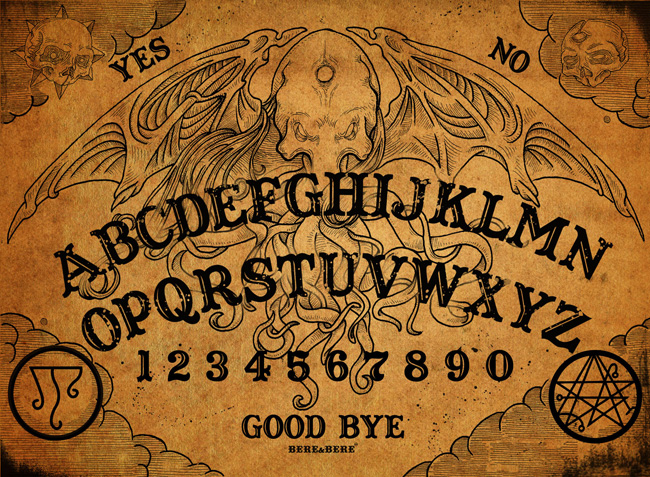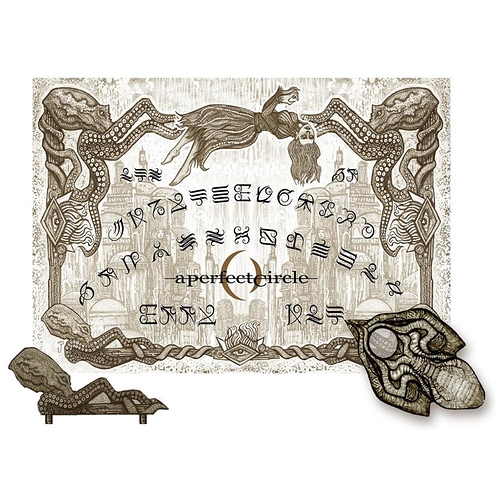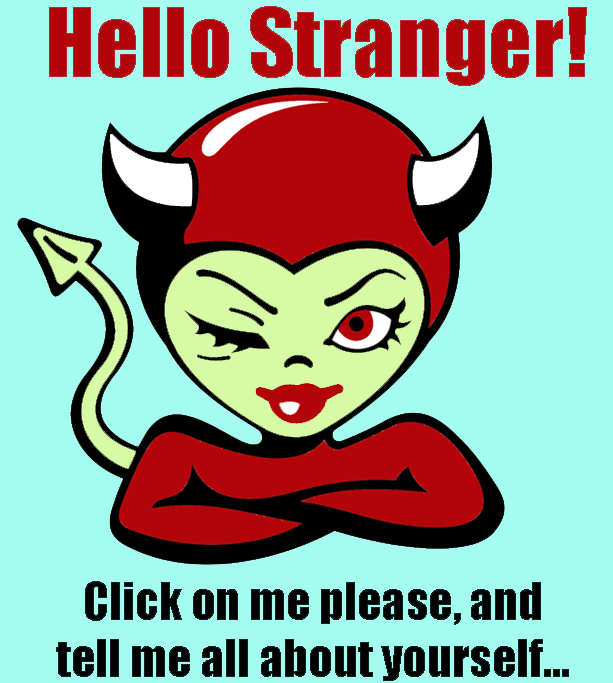
I’ve always thought it strange that EA’s Mastering Divination course starts out having you use the Ouija board alone. Not because it’s potentially dangerous (because it can be if you don’t know what you’re doing), but for the simple fact that it’s usually damn hard to successfully use the thing by yourself unless you’re a natural medium. When I first tried using one alone I was all hyped up with the anticipation of contacting dead relatives and summoning demons to do my bidding–hell, even the simple prospect of being able to talk to my subconscious was thrilling. Thirty minutes later, the planchette having not moved at all and my arm muscles aching from being maintained in a floating position the entire time, I was severely underwhelmed.
As it turns out, many people have had the same problem. Karen Dahlman, author of The Spirits of Ouija: Four Decades of Communication, comments that “it typically…takes much longer to receive consistent communications when working alone,” while Raymond Buckland in his Buckland’s Book of Spirit Communications agrees:
S. Connolly in her book Drawing Down Belial even claims that unless you’re a natural medium you won’t be able to use the board at all:
So where does this leave us? Well, don’t despair! The ability to channel through the spirit board is not something reserved only for the select few who have been casually chatting it up with the dead since they were five. Even if you don’t seem to have any mediumistic tendencies currently, it is possible to learn how to use the Ouija board successfully by yourself–it’ll just take a little dedication and persistence. ![]()
With that in mind, here are some tips and techniques I’ve discovered while delving into what makes the Ouija board tick:
The Technique:
-
Set your intention. I say an adopted affirmation from Martin Coleman’s book Communing with the Spirits: “I ask my Higher Self to permit a helpful spirit to pass through me and assist me in using this Ouija board.” Yes, it may feel silly offering up what feels like a pointless prayer beforehand but for whatever reason I seem to get better results when I do this, perhaps because it signals to the subconscious a willingness to be open to a higher (or lower) power.
-
You will need to be fully relaxed and enter into a light trance state before you begin the process. I like to sit in a comfortable chair with the board on my lap and meditate for a few minutes before starting. Nothing fancy; just let your mind empty by bringing your focus back onto your breathing every time your mind starts to wander. It can also help to perform a progressive relaxation exercise where you visualize a glowing cloud of relaxing energy descend into your head, through your body, and out your feet that takes all stress and anxiety with it and replaces it with a warm, fuzzy heaviness. Any techniques you’re familiar with that raise energy are also helpful here.
-
Place your index and middle fingers from each hand lightly on the planchette. The amount of pressure desired here is so light that if you lift them even a millimeter higher they would no longer be contacting the planchette. Ideally the planchette should weigh as little as possible and the surfaces of the planchette and board should be almost frictionless so it can glide almost effortlessly. Raise your elbows and wrists up so you have complete freedom of movement–do not rest them on the table as this will prevent free expression of the ideomotor effect.
-
Call out to the spirits with a question. “Are there any spirits here?” is simple enough and usually does the trick, or if you’re attempting to focus on a specific spirit ask it to make its presence known. And now the most important part is to just let go. Don’t focus your mind on your fingers or the planchette–the ideal mental state is one of detached observation, one of “if it starts moving, oh well, so what?” Keep your fingers light and your mind as clear from thoughts as you can–wondering if it’s going to go to a particular letter will influence the planchette to move to that letter, which is not what you want! The goal here is to have the planchette move on its own without any overt manipulation on your part.
-
What will happen, if you’ve gotten into the right headspace and are in a sufficient level of trance, is that after a few seconds or minutes the planchette will start jittering every so slightly back and forth from imperceptible muscle tremors in your hands and arms. One direction will win out, and the planchette will slowly start edging that way. It will partly feel like you’re pushing it (because in a sense you are), but you’re not consciously doing so, which is an odd feeling at first and does take some getting used to. Remember, you do not want to consciously move it! The pace of the planchette will most likely be glacially slow to begin with. I was lucky to get 25 letters over the course of a half hour when I first started, which comes out to less than one letter per minute, with time and practice it will speed up.
Tips & Tricks:
You can improve your chances of success using the Ouija board alone simply by meditating often (so you can clear your mind when it counts) and by doing some kind of energy work to clear blockages in your chakras (I recommend Robert Bruce’s New Energy Ways system). I noticed a huge difference in my ability to use the Ouija board simply by doing these two things on a consistent basis.
As far as using the board with other people, I’ve had quite a few interesting experiences doing so, but the problem with it is that you’ll never be 100% certain that they aren’t consciously manipulating the planchette for whatever reason. In the end learning how to use the board solo was ultimately more rewarding, not just because of the reliability issue but because it provided a positive feedback loop for training my mind to enter the desired altered states of consciousness.
Overall, I found the Ouija board to be a uniquely fascinating tool for divination. For one, they look damn cool and there are some gorgeous boards out there, but more importantly it offers a method of spirit communication that seems distinctly suited for wordplay and mischievously constructed messages with double or even triple meanings.
Even the simple act of breaking up a word into its component letters received one at a time can provide fruitful revelation, and although you will probably set the board aside once you start developing claircognizance or clairaudience (you’ll start to either just know what the next letter or word is or you’ll start hearing them mentally), learning to work the spirit board by yourself can, IMO, be an invaluable step in the journey. ![]()




